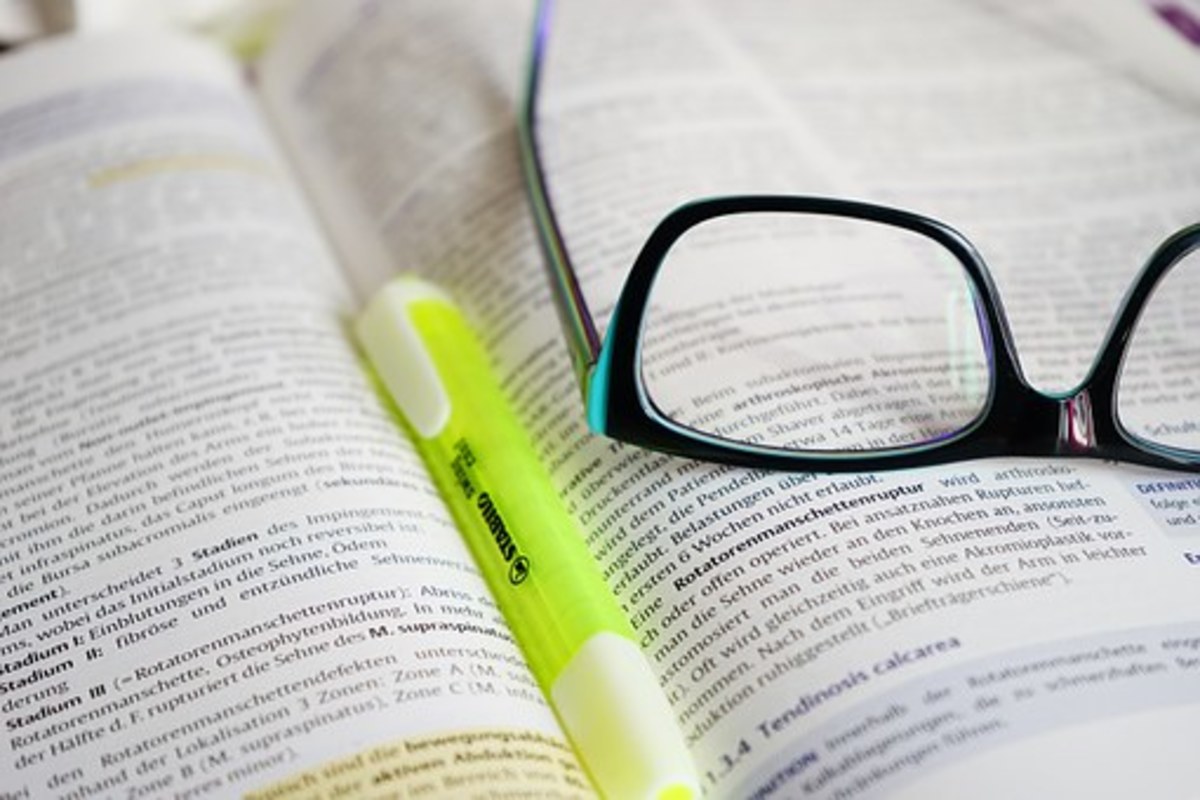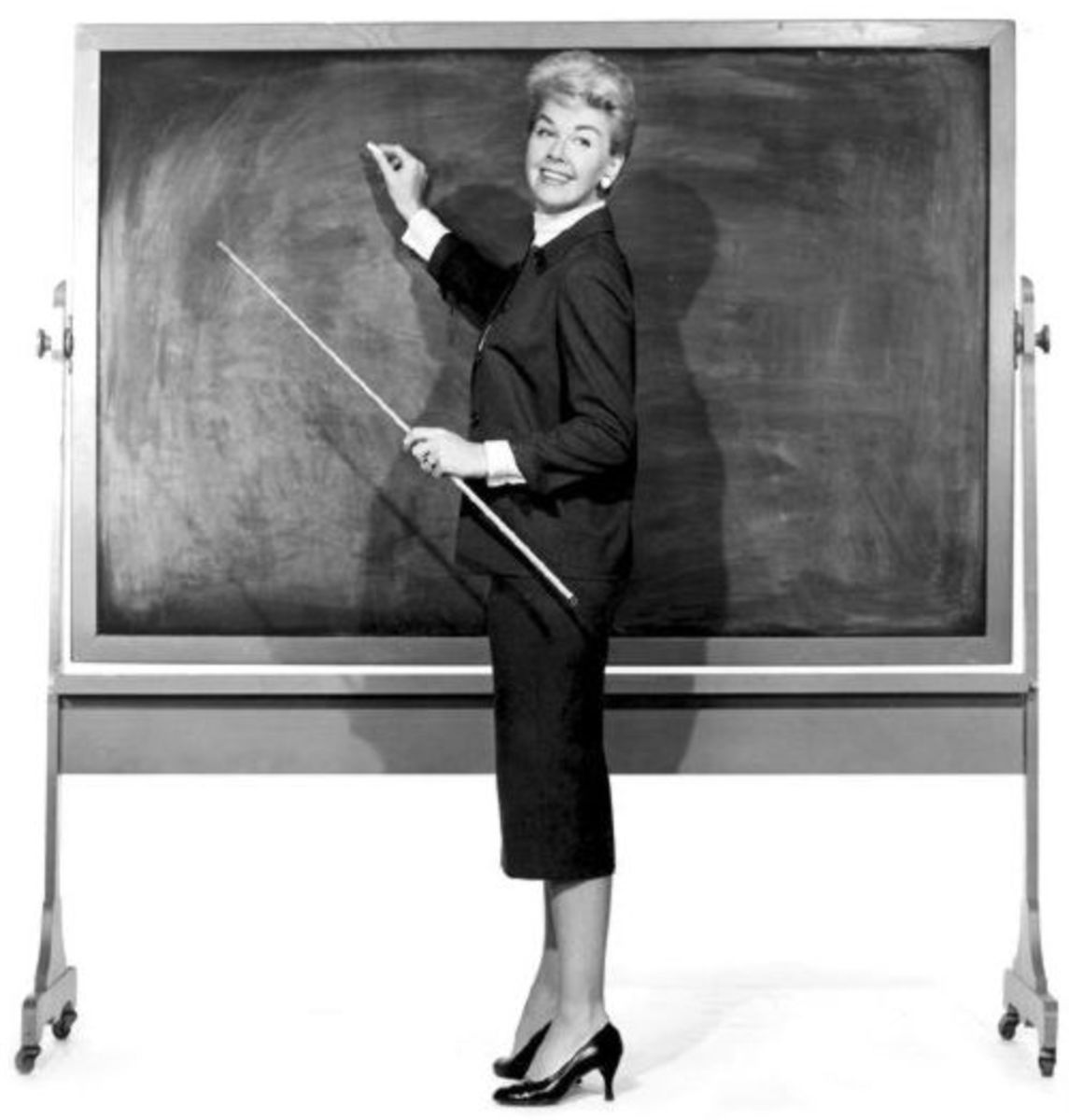Dyslexia Learning Strategies for Students and Their Parents

By Joan Whetzel
Dyslexia, a learning disability that causes students to have difficulty with reading and spelling, can be stressful not only for the students, but for their parents and teachers as well. Students can have trouble completing assignments and listening to lectures or assignment instructions. With a few helpful strategies, dyslexia students can overcome this disability or learn to study and learn despite the shortcomings of their disability. It may take a little longer or involve a few more steps in order for dyslexia students to study and absorb the material, but it can be accomplished.
Teaching Strategies
The first step for getting help for any dyslexia student begins with testing. Testing not only identifies the students who have this disability, it helps identify where the problem areas are, which errors each student makes most often, how each student learns, and which teaching strategies will be most effective. The classroom teacher can then work with the parents, the special education teacher, and if necessary, the school psychologist to plan the dyslexia student's program, as well as extra tutoring and support. to help each student succeed. By working closely together, the teacher, parent, special ed teacher and school psychologist can give each other feedback on what is working and what isn't so that adjustments to the program can be made as the student progresses.
Programs Based on Learning Styles and Students' Needs
Teaching programs for dyslexia students are based on the needs of each student. The methods used mirror each student's learning style (visual, auditory, or tactile). One or more of each teaching strategy will be used in the classroom, in tutoring sessions, and at home.
1. Multisensory Teaching Methods: All subjects are taught in the classroom using the sense of touch, hearing, and sight, which stimulates all of the student's senses and appeals to the senses that are most likely to help that student absorb the information presented in that lesson.
2. Individual Tutoring: A special education teacher will work on a one-to-one basis with students based on the individual lessons in the teacher's lesson plans. This provides extra support for the dyslexic student in understanding the material and identifying where the student is having problems with each lesson and subject. Adjustments can then be made in the classroom and homework assignments and the tutoring session can be tweaked to the students needs to prepare them for learning the current lesson and future lessons.
3. Phonics Teaching Methods: This teaching strategy helps with auditory learning by helping students make a connection between letters, letter combinations, words, and sentences and the sounds that form them.
4. Whole Language Teaching Methods: This teaching strategy exposes students to natural reading activities and sight word vocabulary exercises that are aimed at helping students develop their reading skills.
5. Speech and Language Therapy: This is another method for enhancing the connection between sound and the letters and words on the page, used more with students with phonological disorders or speech impediments.
There are other strategies that students can be taught or can learn on their own to help them succeed in learning and make learning easier and even fun.
Dyslexia and Memory
Using one or more of these seven strategies may help dyslexia students improve their memory skills, which will in turn make learning easier because it will be based on knowledge retention.
1. Mega-Cognitive Strategy. When learning lists of words or information in list form, ask yourself what it is that helped your remember the words, then jot down that learning technique so that you can use it again in future study sessions For words it might be words that begin with the same letter, words listed in alphabetical order, specific letter combinations that they all share (ie, ei, ea, oa), or word endings (silent -e or a syllable like -tion). For information in list form it might be noting that you learned the names of cities going from east to west or north to south, you learned the sequence of events based on the date they occurred or based a cause-and-effect (one event led to the next which led to the next).
2. First Letter Strategy. This is a mnemonics exercise. Two prime exams are ROYGBIV and HOMES. ROYGBIV stand in for the colors of the rainbow (Red, Orange, Yellow, Green, Blue, Indigo, Violet) and HOMES represent the names of the great lakes of North America (Huron, Ontario, Michigan, Erie, Superior). A variation of that is to assign another word to the first letter so that it forms a sentence that helps remember the order of the words on the list. Example: My Very Ethereal Mother Just Served Us Nine Pizzas. In this case the first letters - M,V,E,M,J,S,U,N,P - represent the names of the planets - Mercury, Venus, Earth, Mars, Jupiter, Saturn, Uranus, Neptune, and Pluto - in order from the Sun to the outer reaches of the solar system.
3. Story Strategy. Here you will write a story using all the words or topics on the list as a means of memory building.
4. Grouping Strategy. If the list of words or topics seem unrelated, try grouping them into families that seem related to you. It could be groups of planets, lakes, animals, body parts (shoulder, knee, fingers), modes of transportation, or whatever the words or topics suggest.
5. Imagery Strategy. Try finding pictures in magazines, newspapers, or on the internet or even draw pictures that help you visualize the word or topic.
6. Location Strategy. Identify the words, names, topics, or events with faces and locations. It may help you remember all the events that occurred in a specific location and how those events affected what was happening in neighboring locations. Or maybe it helps you remember how things affected specific people or how those people were involved in what happened.
7. Peg-Word Strategy. Highlight keywords in your reading. Make a list of those keywords (peg-words) and make a rhyme out of them. Examples: two-shoe, ten-hen, peak-tweak, might-bite. Remembering the keywords, or peg-words is sometimes helpful in triggering memory.
Dyslexia and Reading
Whenrequired to read large selections in text books or articles or materials that are difficult to wade through because the material is technical or uses harder words. There are two basic strategies. One is to allow yourself extra time to get through the material by setting aside large periods of reading time or by starting the reading assignments well in advance. The second involves getting someone to read the material to you. This is especially helpful if you are more of an auditory learner.
Dyslexia and Visual Learning
For visual learners, try one or more of these visual strategies to help understand and remember the information being taught.
1. Use pictures to help explain the information, either from magazines, newspapers, online or by drawing them yourself.
2. Associate pieces of information with specific colors. For example: try highlighting events / dates in blue, people in orange, locations in yellow, causes in purple and events in red. Or use red for addition, blue for subtraction, green for multiplication, and yellow fro division. Just pick the colors that work best for you and be consistent in using the colors when studying.
3. Use a whiteboard to organize material using brainstorming techniques to help visualize related material. Add colors as an additional cue or memory trigger.
4. Find YouTube videos, posters, or any other visual media images that help you see what's being taught.
5. Use graphic organizers to help organize the material in each lesson. This may be something you create yourself like generating a table with the main topics in one column, the main points in the middle column, and the supporting details in the far-right column. It could also mean making use of a calendar or blank calendar template where you break down the information and display it in the order that makes the most sense to you using the calendar's squares. Or make use of one that can be obtained online or purchased either in a school and teacher supply store or in the school supply section of any store.
6. Use presentation software, like Power Point, to break down the information and add pictures to help you visualize the materials.
7. Make yourself a set of flashcards. Print questions, pictures, dates, locations, etcetera on one side of the card. On the reverse side, fill in the answers or the story behind the pictures and key points on the front of the card. As an extension of the learning strategy, try setting it up like the game of "Jeopardy" by breaking it down into sub-topics and either answering the questions or posing questions for the answers. Then turning the card over to see if you are correct.
Study Skills
Let high school teachers or college professors know that you have dyslexia. They have had many students over the years with this disability and are willing to work with you to help you succeed in their class. If they don't provide you with an outline for their class curriculum, ask for one either in person or by email. College professors usually provide students with an email address so that students can get hold of them to ask questions or get information to help them in class.
- · Class outlines will break down the subject matter into smaller, more manageable bites (making the class material seem less overwhelming) and can help the dyslexic student see how the each piece of the material relates to all the others (sort of a cause-and-effect thing).
- · Ask the teacher if there are any resources in the library, within the community (museums) or online that could help you learn the material by your preferred learning method (visual, auditory, or tactile). Then take advantage of those whenever possible.
- · Ask if there is any software which you can purchase that is specific to this class topic or any school labs that have the software already installed that will help you learn the material.
- · Find out if there are tutors provided by the school that can help you study and learn the material.
- · Join study groups. Sometimes the input from fellow students is quite helpful in making sense of the material.
- · Have someone read the following things aloud: required essays or term papers, any notes you have taken, outlines you made from your textbook notes, class notes, and extra reading notes. This is particularly good for auditory learners.
- · Make yourself an outline to make sequences out of events, science experiment steps, mathematical equations. Having a sequence outline as a visual cue can help dyslexic students remember to place study items in the right sequence regularly so that it becomes a matter of habit. Habits are easier to remember.
- · Be aware of which learning styles (visual, auditory, tactile) work best for you and make sure you use these when learning new subject materials and when studying for tests. You may find one learning style works better for some topics (visual for math or geography) while another learning style works better for others (tactile for cooking, sewing, or science experiments).
Alternative Learning Strategies and Tips for Dyslexics
Dyslexic students may find that these four alternative strategies or tips may help as well.
1. Managing Time.
- · Use a calendar to break down reading and writing assignments, exam dates and times, and study sessions into manageable segments and due dates, and spread them out across the calendar for the entire semester. This will help you see when you need to accomplish you need to accomplish each set of items for each class.
- · Use a different color for each class.
- · Place each item on the calendar as a beginning date, a completion date, a due date, or any combination that works best for you. If you handwriting is such that you sometimes have difficulty reading it, find someone with neater handwriting - preferably handwriting you can read easily - to fill out your calendar for you and help you make changes as they occur.
- · Break study sessions into smaller segments. Take regularly scheduled breaks. The smaller study times makes studying more manageable and less overwhelming.
2. Technology Tips.
- · Create power point displays to organize and study the material.
- · Use the internet to find additional materials to help you make sense of the information.
- · Create yourself some outline templates, saved in a file on your computer desktop or thumb drive to help organize material for each subject area (math, science, history, English or lit).
- · Record lectures on an audiotape recorder. Make sure you label each tape by class and lecture date. Listen to the tapes whenever possible as reinforcement of your auditory learning skills. Most professors recognize this as a viable learning strategy and will allow during class lectures.
- · If required reading books are available on CD, rent or purchase one and listen to it rather than read it. If you can buy it cheaper from a former student of the class, even better. Make sure you keep the CD in good condition so you can sell it to another student next semester.
- · Make use of any resources available to blind students. These are frequently quite helpful to dyslexic students who are auditory learners.
- · Make use of resources for deaf students which can be useful for visual learners.
- · Take notes on the computer during reading assignments and lecture. This is both a tactile and a visual learning technique.
- · Use a program that allows you to speak into a microphone and prints out the words you say on the screen. This makes note-taking easier for those who have trouble with writing skills, or for those who have trouble reading their own handwriting.
- · Find a computer program that will read back written material.
- 3. Managing Materials and Study Time.
- · Don't bite off more than you can chew. If the writing assignment only requires a few paragraphs about Harriet Tubman, don't research the entire history of the Underground Railroad. It's more information than you'll need and won't help you write the assignment.
- · Study at the time of day that you find will help you remember the material better. If you study and remember best just before dawn, then get up and study just before dawn. If you study best at midnight, then study at midnight.
- · Background noises make a difference. Use the type of music (instrumental, heavy metal, Christmas music) that helps you remember what you are studying. You may find you need the TV on as background noise (or turned off of the sound irritates you). You may find that family or others in your dorm simply make too much noise. In this case get a set of noise-cancelling headphones and use them to block out noise. Nobody has to know you're listening to nothing.
- · Eliminate any distractions - TV, the stereo, the telephone, the answering machine, other people talking or partying.
- · Do whatever little fidgety or mindless, repetitive actions are necessary to help you get into a studying or reading rhythm - chewing gum, drumming on the desktop or table, tapping your foot, listening to percussion music or any music with a regular beat, compiling a CD or MP3 soundtrack related to the subject you are studying, mending your clothes, repeatedly drawing the same little icon or drawing. Surprisingly, this may act as a memory trigger.
4. Attitude Is Everything.
- · Go into any study session or new semester with a positive, can-do attitude. It will go a long way in keeping you positive about the learning experience and helping you learn, because you want to learn, because you want to be there not because you have to be there.
- · Don't see your dyslexia as a bad thing, as something that keeps you from learning. See it as a condition that lets you see things more creatively, that helps you understand things in ways your non-dyslexic classmates never dreamed of. You have the advantage of seeing things far more differently than regular learners do.
- · Look at how far you've come. Isn't it amazing how much you have accomplished in a learning world geared more toward people who learn by regular means. You may not learn like the rest of the crowd. You may have to go the extra mile or go to extra lengths to understand the material, but you have learned more than non-dyslexic students have all along the way.
- · Don't be embarrassed about having to have the special ed tutoring or any special help along the way. It helped you get where you are today. It helped you succeed in areas where you might have failed. It helped you find ways to help yourself learn, and to enjoy learning.
- · Dyslexia may be a permanent condition, but it will never stop you from succeeding because you have learned to overcome the aspects that might have held you back.
- · You have learned a huge number of high-tech and low-tech skills that will help you throughout your life. Most people who don't have dyslexia, will never have need of learning these skills. This puts you at a definite advantage because most of the skills you learn to help with your dyslexia are precisely the skills needed to succeed in most jobs these days.
Teachers, tutors, school psychologists and parents can do a lot to help dyslexic students. But there are many strategies that dyslexia students can use to help themselves along the way. These will not only help them in school, they will help these dyslexics in any job they take later in life.
Resources
American Heritage Dictionary. Dyslexia.
http://education.yahoo.com/reference/dictionary/entry/dyslexia
Medicine Net. Dyslexia.
http://www.medicinenet.com/dyslexia/article.htm
Logsdon, Ann. About.com. Assessment, Teaching Strategies for Dyslexia.
http://learningdisabilities.about.com/od/learningdisabilitybasics/a/dyslxiapart2.htm
Dyslexia Teacher. Teaching Methods for Dyslexic Children.
http://www.dyslexia-teacher.com/t6.html
Cleeton, Dr. Lorraine. Dyslexia Parent. Dyslexia and Memory.
http://www.dyslexia-parent.com/mag39.html
Mattson, Stephen. Helium. College Study Tips for Students with Dyslexia.
http://www.helium.com/items/1770262-overcoming-dyslexia-in-school
Dyslexia Treatment. Dyslexia Treatment - Alternative Learning Strategies.
http://dyslexiatreatments.org/dyslexia-treatment-alternate-learning-strategies/
The University of Nottingham. Strategies that Dyslexic Students Use When Reading.
http://www.nottingham.ac.uk/pesl/themes/learning/strategx485/
University of Sheffield. Study Skills for Students with Dyslexia.
http://dyslexstudyskills.group.shef.ac.uk/
Hall, Nancy. The Yale Center for Dyslexia and Creativity. Tips form Dyslexic Students for Dyslexic Students.
http://dyslexia.yale.edu/DYS_Student2Student.html
Mantel, Janelle. Bright Hub. Dyslexia and Visual Learning Strategies.







